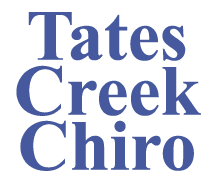Pregnancy and Child Related Issues in Lexington KY

Chiropractors in Lexington have actually cared for pregnant women for many years. Recently, however, with the increased interest in natural birthing, and in an effort to avoid having a C-section, a growing number of mothers have incorporated chiropractic into their prenatal care. To understand how chiropractic care can contribute to a better birth, it is important to look at the mother's and baby's biomechanics throughout pregnancy.
Chiropractic Care For an Easier Pregnancy and Safer Birth in Lexington
You might have noticed that chiropractic care is becoming an important part of birth preparation for many pregnant women these days. These women are realizing the benefits of regular chiropractic adjustments as they prepare for safer, easier birthing for both themselves and their babies.
As a mother's weight increases, her center of gravity shifts outward and her postural compensations respond accordingly. In addition, the ligament laxity necessary for birthing adds to instability in all of her joints, including her spine and pelvis.
"The potential for damage in pregnancy and the postpartum period to a woman's neuro-musculoskeletal structure is great," Varney's Midwifery warns. "Shifts in the center of gravity forward and slightly up destabilize her posture and realign the carriage of weights and forces through her joints, predisposing nerves, muscles, bones, and connective tissues to damage. Increased levels of relaxin and elastin further aggravate this situation."
Changes During Pregnancy
These hormonal and structural changes can lead to spinal and pelvic misalignment and the lower back pain many women experience during pregnancy. Lower back pain, in and of itself, is a burden to a woman's daily function and quality of life. However, the misalignment of the spine and pelvis have a far more crucial consequence to a mother and her developing baby. In chiropractic, these misalignments are called subluxations. These insidious blockages cause stress overload to the mother's nervous system, potentially impairing any of her vital systems and organs. During pregnancy, when a mother's body systems are basically functioning for two, any interference to the nerve transmission supporting their function can be detrimental to her health and well-being, as well as the growing baby's. Reducing this nerve system stress is a key ingredient for normal bodily function.
Another effect of spinal and pelvic misalignment throughout pregnancy is a condition imposed on the baby called intrauterine constraint. To understand this, it is important to look at the mother's anatomy and see the relationship between her pelvic biomechanics and the baby's positioning. The mother's pelvis has various key ligaments attached that support her uterus. As the baby grows, their role becomes increasingly important. If her pelvis is in biomechanical balance during pregnancy, the uterus will be supported symmetrically. This allows the baby optimal room for movement in utero and provides it the opportunity to develop free of constraint. Conversely, if the woman's sacrum (the major triangular bone in her pelvis) is out of alignment, it will affect the alignment of her entire pelvis. Misalignment of the pelvis will create an uneven pulling effect on the uterine ligaments, which explains why some women feel sensitivity on one side more than the other. Intrauterine constraint can create torsion in the uterus, limiting available space for the developing baby. This can inhibit the development of the baby's spine.
Gross misalignment conditions like torticollis create excessive stress to the baby's developing neuromuscular system, and can impair his nervous system and adversely affect virtually any of the body's systems and functions.
Intrauterine constraint not only compromises fetal positioning, but can also impair the future health of the baby. The optimal position for birth is anterior vertex (rear-facing, head down). When a baby presents breech or posterior, it often is the result of an imbalance in the mother's pelvis, forcing the baby to assume a compromised position.
Even if the baby is vertex, the head may be tilted off to one side. This tilting is termed "ascynclitic." While this position is less troublesome than breech or posterior, it could still result in a lengthier, less comfortable and more complicated birth. Ideally, the baby's neck should be flexed forward without a tilt to either side.
The body's intelligence wants the easiest route out for the baby. If mother's biomechanics are compromised, obstetric interventions are more likely to be recommended and implemented. Each and every intervention has significant side effects for both mother and baby. Many drugs and procedures are used "off label," meaning the FDA has not approved them for their obstetric application. Furthermore, such interventions are often not evidence-based, and therefore their effectiveness is questionable, at best.
Preventing Interventions
All obstetrical interventions increase the risk of subsequent and more serious procedures. For example, with any intervention (e.g. Pitocin, epidural anaesthesia, etc.), the risk of mechanical delivery (the use of forceps and vacuum extraction) and surgical delivery (C-section) multiplies substantially. These unnatural modes of delivery are risky and traumatic to both mother and baby. Proper prenatal chiropractic care, however, is a valuable tool to decrease the reliance on these invasive delivery procedures.
Medically classified birth trauma is when the baby has fractured clavicle and humeral bones, overt neuromuscular damage such as Erb's and Bell's palsy, or severe spinal cord injury. Chiropractic classification of birth trauma is much more specific and distinct. Evidence of birth trauma is when the baby has misalignments to his or her spine affecting nerve system function. These less obvious traumas can be detected by doctors of chiropractic as soon as a child is born. The unique expertise of chiropractors can detect and correct these misalignments with a gentle touch to the baby's cranium and spine. When parents understand the importance of nerve system function and the potential trauma of birth, they recognize the importance of having their infants checked immediately after birth.
Fortunately, today's parents are becoming increasingly aware of the importance of the mother's pelvic biomechanics throughout pregnancy. Giving it due attention will not only result in a more comfortable pregnancy, but will optimize the baby's developing systems in utero and contribute toward achieving optimal fetal positioning for a safer and easier birth for both mother and baby.
Written by Jeanne Ohm, D.C.
Monday
8:00am - 12:00pm
2:00pm - 5:30pm
Tuesday
1:30pm - 5:30pm
Wednesday
8:00am - 12:00pm
2:00pm - 5:30pm
Thursday
8:00am - 12:00pm
2:00pm - 5:30pm
Friday
8:00am - 12:00pm
Saturday
Closed
Tates Creek Chiro
previously LifeStyle Chiropractic
148 West Tiverton Way #140
Lexington, KY 40503


